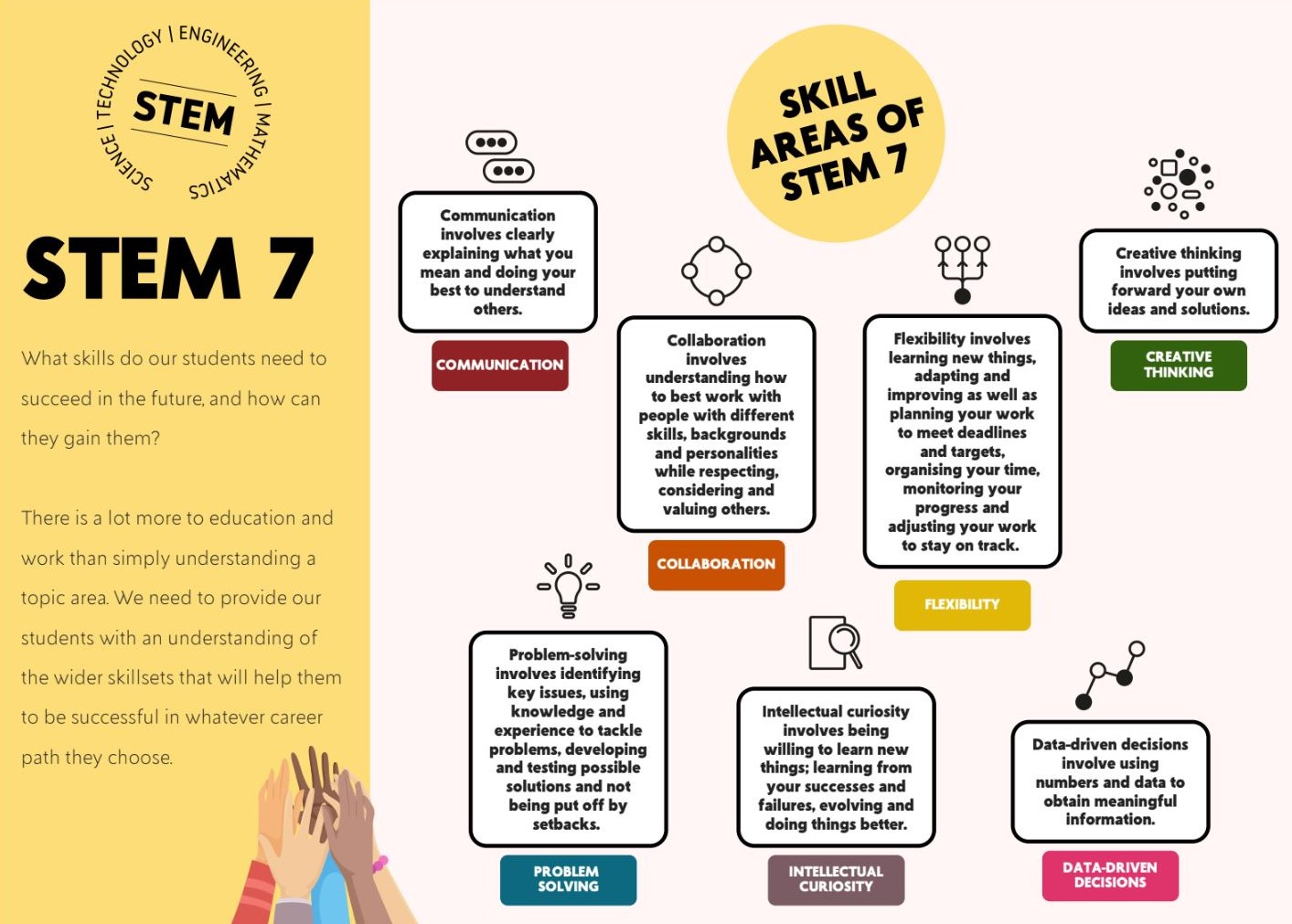
Using the seven pillars of STEM to create tomorrow’s workforce
The Labour government has made economic growth its top priority, but to drive this it will need to address skills shortages in the STEM sector which are holding us back to the tune of £1.5bn per year, writes Ann Marie Spry, our Vice Principal of Adults.
Colleges and higher education institutions like ours clearly play a vital role in addressing this problem – but not only through teaching the technical skills our learners need to succeed.
After analysing employer reports about recruitment in STEM fields a few years ago, what came over loud and clear was that while many of the students had the knowledge needed for the job, they didn’t have the necessary – and equally vital – behaviours.
So looking through a number of documents that mapped out the key characteristics that STEM employers were looking for, we whittled them down to create what we have called STEM 7. These are the attitudes and behaviours that underpin not just the science and tech industries but all kinds of jobs, from pastry chefs to fashion designers.
A skillset that transcends boundaries
STEM 7 consists of: creative thinking, problem-solving, communication, collaborative working, intellectual curiosity, flexibility and data-driven decision making. Just about all of those concepts are actually relevant regardless of the subject. Everybody these days has to use digital technology and maths in one way or another, and if you think of the design approach and problem-solving inherent to engineering, most jobs require creativity too.
Our challenge, as educators, is to ensure our curriculum provides opportunities for students to step out of their comfort zones and take on tasks in some of those STEM 7 areas they may struggle with. Engineers, for example, are known for having many important qualities – including problem-solving and, through their design approach, creativity. But they are not traditionally renowned for their collaborative approach or communication skills, both of which are invaluable in the workplace.
That’s something our approach can help students with before they join the world of work, by stretching and developing them to ensure they have some of those transferable skills that businesses of all types really value.
And we know it’s working. We included some of our partner employers, like tech consultancy BJSS, in the first discussions about our STEM 7 strategy to make sure they were on board, and they’ve been nothing but supportive.
Opening minds
Introducing this concept has meant challenging both ourselves and our students to broaden how we think about STEM. As someone with a science background I feel strongly that many people tend to have a fear of ‘science’ and the STEM subjects, but that’s something we can and will change because it’s all around us in everything we do daily.
One key way of doing so is through revising how we teach and moving away from the thoroughly unhelpful old perspective that saw technical and artistic courses as being entirely separate. Thankfully, there is an increasing awareness that both disciplines depend on each other and share many underlying principles, not least when it comes to creativity and intellectual curiosity.
The shorthand for this new perspective is STEAM (essentially, STEM plus the Arts) and Computer Game Design and Development is a classic example of STEAM in action. We teach the subject at Leeds City College as part of our very broad offering from the School of Creative Arts, at Quarry Hill campus – and it is the epitome of a field where technical know-how and creativity are equally important.
An immersive approach
Combined with this more open-minded perspective on what actually constitutes a STEM topic is the need to exploit emerging immersive technologies like AI and VR.
Such tools can offer great benefits to our students and the industries they want to enter. If you are studying healthcare, for example, you really want to learn on a hospital ward and we can offer that; indeed it will be one of the many new facilities that Harrogate College will provide following its £22m rebuild.
What VR does though, is give you so many additional options – in this case it allows you to change ward layouts, for example, and patient scenarios so that students are exposed to a wider set of challenges and leave college with a deeper understanding of what their jobs will entail.
We are already successfully using VR in welding at Keighley College, while across our group emerging technologies are helping us enhance the teaching of everything from science to electric vehicle infrastructure.
By combining these high-tech teaching aids with a STEM 7 approach, which also delivers those in-demand ‘softer skills’, we will start to plug those STEM-shaped holes in the country’s economy.
This thought leadership piece was recently published in FE Week.
Tags: Ann Marie Spry, Keighley College, Leeds City College, skills gap, STEM

